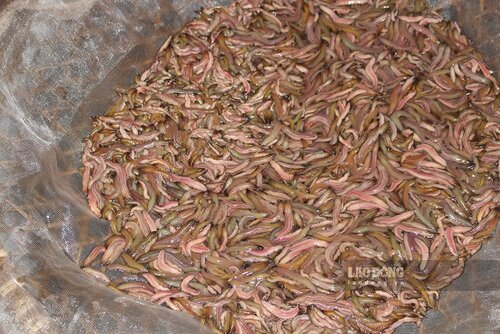Natural specialties
For a long time, earthworm in Tu Ky district (Hai Duong province) has been known as a specialty, not only because of its delicious taste and high nutritional value but also because of the "given-in-one" factor - this animal has not yet been artificially reproduced.
Rumps are soft-bodied animals, belonging to the mycological worm family, only appearing in areas with special ecological conditions. In the North, ruoi are present in some provinces such as Hai Duong, Hai Phong, Thai Binh, but the most famous is still Tu Ky ruoi.
Thanks to its superior quality, the crab here is often purchased by large restaurants at high prices to process into many specialties such as crab cakes, crab spring rolls, crab crab crab, crab fish sauce, etc. These dishes are not only rich in the flavor of the countryside but are also highly appreciated for their nutritional value.
However, unlike aquatic species that can be traditionally raised, ruoi completely live in the natural environment.
Ms. Nguyen Thi Hoa (An Lao village, An Thanh commune, Tu Ky district, Hai Duong province) shared: Normally, the crab lives about 3040cm deep on the ground. It was not until September and October of the lunar calendar, when the tidal water from the river receded, that the ruoi began to emerge.
At that time, the water in the ruoi bai bien gradually calm down, each ruoi crawled up to the water surface, and we, the people, showed us how to collect them. Each crab season has only a few instances, and the most or the least of it is thanks to heaven - truly the word "heaven".
According to Ms. Hoa, in years with favorable weather and the tide rising and falling at the right cycle, the ruoi output will be quite good. However, if the flood continues, the temperature is erratic or the river water and ruoi are polluted, the ruoi season can be considered a total loss.

Can't be propagated, can only be protected
Although market demand is increasing and ruoi brings great economic value, up to now, breeding ruoi is still an unresolved problem. According to many people, the life cycle and special reproductive habits of ruoi are a major obstacle to farming. This is also the reason why Tu Ky people especially value and preserve the natural habitat of ruoi.
In An Thanh commune - one of the localities with a famous ruoi area of Tu Ky district - people are used to "feeding" ruoi in a very unique way: not feeding or releasing seeds, but protecting alluvial plains, building banks, irrigation, and sowing rice interspersed to create favorable conditions for ruoi to return to live and breed.
Recently, information about the handover of 8 million "ries" has attracted public attention. Many people are concerned, even reacting, when thinking that this is an inaccurate term, causing misunderstanding that ruoi can be artificially propagated.
Talking to Lao Dong newspaper, the leader of An Thanh commune affirmed: "We must clearly distinguish between breeding animals and natural larvae. Breeding is due to human active intervention in the breeding process, while currently, ruoi still breed completely naturally.
The Larvae that were delivered were actually ruoi born from natural farming areas, collected and redistributed. To be exact, it must be a ruoi trung, not a giong ruoi in the usual sense.
Using the wrong term not only causes misunderstanding in public opinion but also affects the general awareness of the conservation and development of ruoi. In fact, proactively collecting and redistributing ruoi Larvae can help expand the ruoi area, but cannot replace complete breeding. Therefore, the efforts of local people must still focus on preserving and restoring the natural ecosystem.











